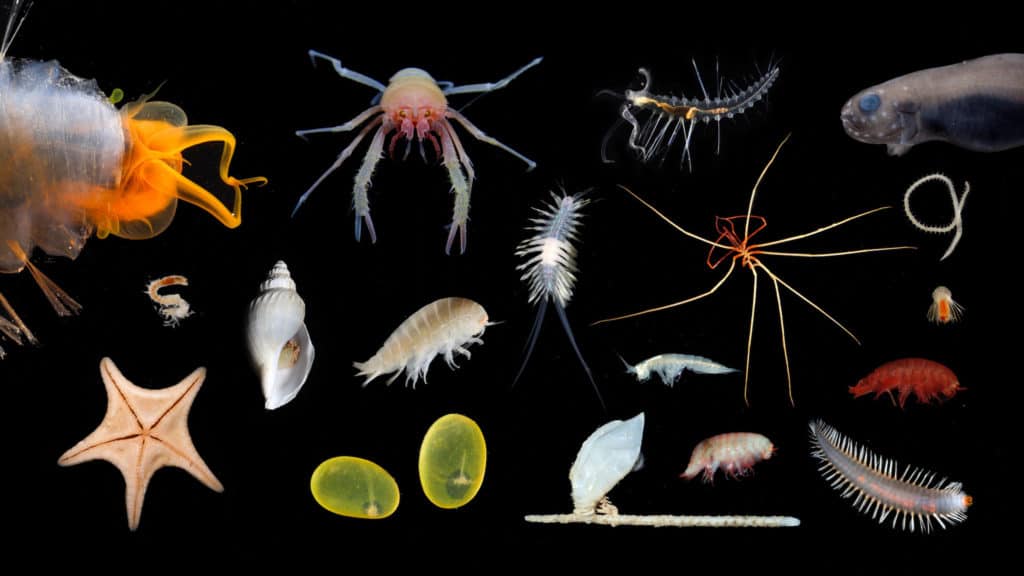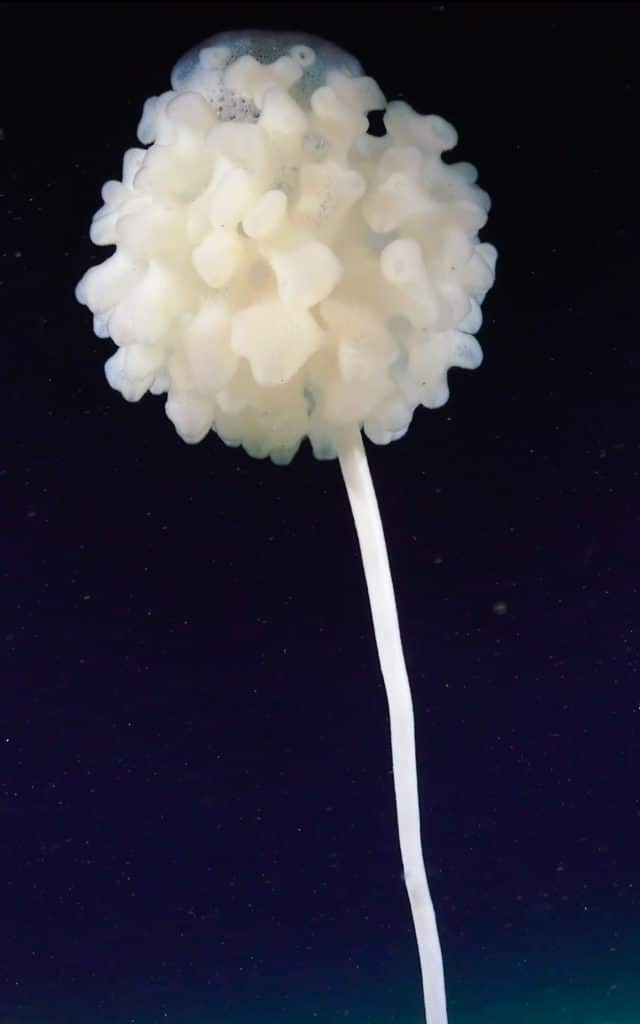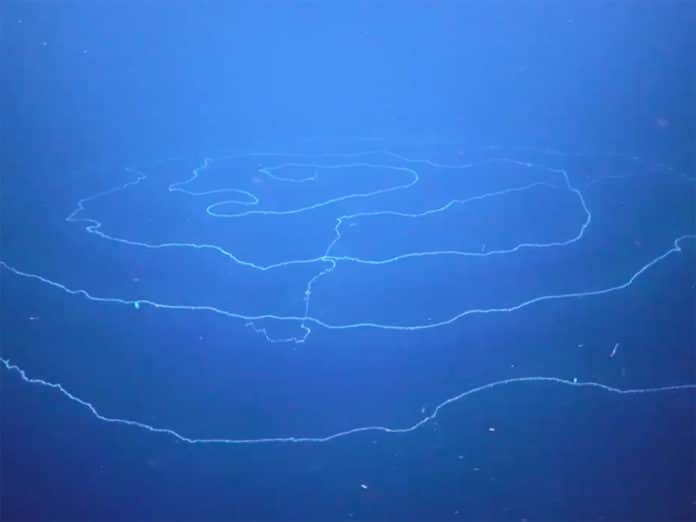While exploring the submarine canyons near Ningaloo, scientists at the Western Australian Museum aboard Schmidt Ocean Institute have discovered the longest animal ever- an estimated 150-foot siphonophore.
Siphonophores are some known species of gelatinous strings that can grow 100-150 feet long, making them some of the longest critters on the planet. But, instead of growing as a single body like virtually every other animal, Siphonophores clone themselves thousands of times over a half a dozen of different types of specialized clone cells, all strung together to work as a team.

Not only Siphonophores, but scientists also discovered 30 new underwater species.
In collaboration with the Curtin University, Geoscience Australia, and Scripps Institution of Oceanography, scientists from the Australian Museum, led by Chief Scientist Dr. Nerida Wilson, were exploring the Ningaloo Canyons in the Indian Ocean using an underwater robot, ROV SuBastian.
The robot completed 20 dives at depths of up to 4,500 meters over 181 hours of exploration.

During exploration, scientists collected the first giant hydroids in Australia. They discovered large communities of glass sponges in Cape Range Canyon and observed for the first time in Western Australia the bioluminescent Taning’s octopus squid, long-tailed sea cucumber, and several other molluscs, barnacle and squat lobster species. Some of the species collected will be exhibited at the Western Australian Museum.
Lisa Kirkendale, head of aquatic zoology at the Western Australian Museum and co-principal investigator, said, “We suspected these deep-sea areas would be diverse, but we have been blown away by the significance of what we have seen. These specimens represent so many extensions in-depth and range records for so many species, and will form an important new part of WA Museum collections.”
